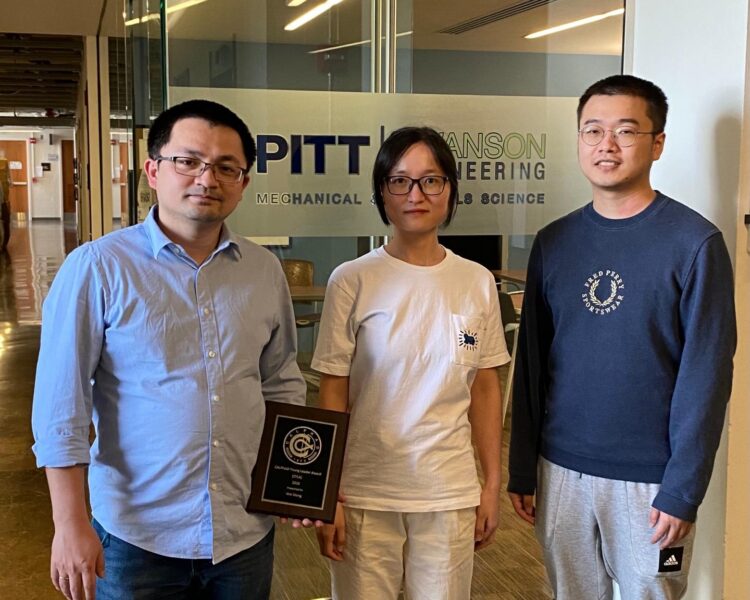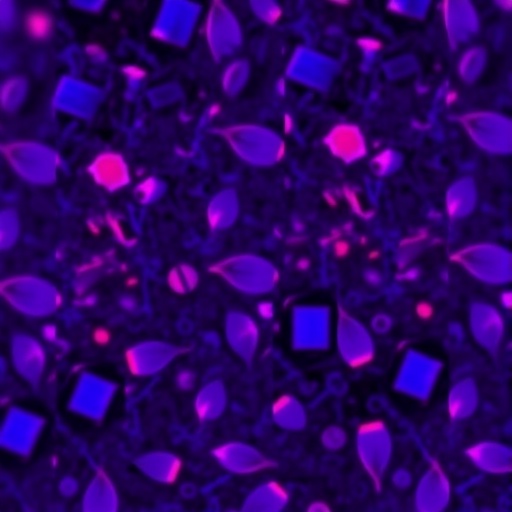Assistant Professor Wei Xiong honored with inaugural CALPHAD Young Leader Award
PITTSBURGH (June 25, 2021) … CALPHAD (CALculation of PHAse Diagrams) is one of the genomic toolkits for material design and more recently is widely used in alloy innovation, ceramic design, processing optimization, and microstructure engineering. Its high-performance, time reducing capabilities are an incredible resource for thermodynamics research, especially for developing novel functional alloys.
Using CALPHAD to help identify 21st century alloys is the focus of the University of Pittsburgh’s Wei Xiong, who received the inaugural CALPHAD Young Leader Award at the 50th annual CALPHAD Global conference (CALPHAD Global) this June.
“I am humbled to receive the first CALPHAD Young Leader Award and grateful to my colleagues and friends for their endless support and guidance,” said Xiong, assistant professor of mechanical engineering and materials science at the University of Pittsburgh Swanson School of Engineering. “I look forward to organizing the Young Calphadian Workshop in the next CALPHAD annual meeting in Sweden.”
The CALPHAD Young Leader Award is presented by the CALPHAD advisory committee to a researcher under 40 years of age who has demonstrated high achievement and active participation in the CALPHAD community, as well as strong leadership skills. No self-nomination is permitted.
In addition to the CALPHAD honor, Xiong and graduate student Liangyan Hao received the Best Paper Award from the Alloy Phase Diagram International Commission (APDIC). The publication, “An evaluation of the Mn-Ga system: Phase diagram, crystal structure, magnetism, and thermodynamic properties,” (DOI: 10.1016/j.calphad.2019.101722) was selected as the best published manuscript on materials thermodynamics from all journals in 2020.
According to Xiong, the fundamental thermodynamics of the Ga-Mn (Gallium-Manganese) alloys is important for applications in magnets, spintronic devices, semiconductors, etc., but differences between available Ga-Mn phase diagrams can impede research. Through comprehensive and critical reviews, Xiong and Hao proposed a new phase diagram for the Ga-Mn system to support future thermodynamic modeling and design of novel functional alloys. Their publication was funded by the National Science Foundation as part of the project “Mechanisms of hierarchical microstructure formation under rapid solidification of functional Heusler alloys” (NSF DMR 1808082).
In this work, Wang completed a high-throughput simulation for predicting critical properties, such as yield strength, impact transition temperature, and printability. He then proposed an optimized alloy composition that shows a near 100 percent chance to make the successful additive manufacturing component. The presented strategy is general and can be applied to other alloy composition optimization to expand the choices of alloy for additive manufacturing.
###
Financial support for this research is from the Office of Naval Research (ONR) Additive Manufacturing Alloys for Naval Environments (AMANE) program (Contract No.: N00014-17-1-2586 Integrated Computational Materials Design for Additive Manufacturing of High-Strength Steels used in Naval Environments). This research project so far has published five high impact papers:
– Xin Wang, Wei Xiong, “Uncertainty Quantification and Composition Optimization for Alloy Additive Manufacturing Through A CALPHAD-based ICME Framework”, npj Computational Materials, nature publishing group, 6 (2020) 188. https:/
– [Editor’s Choice Article] Xin Wang, Soumya Sridar, Wei Xiong, “Thermodynamic investigation of new high-strength low-alloy steels with Heusler phase strengthening for welding and additive manufacturing”, Journal of Phase Equilibria and Diffusion, 41 (2020) 804-818. https:/
– Soumya Sridar, Yunhao Zhao, Wei Xiong, “Cyclic re-austenitization of copper-bearing high-strength low-alloy steels fabricated by laser powder bed fusion”, Materials Characterization, 166 (2020) 110437. https:/
– Soumya Sridar, Yunhao Zhao, Kun Li, Xin Wang, Wei Xiong, “Post-Heat Treatment Design for High-Strength Low-Alloy Steels Processed by Laser Powder Bed Fusion”, Materials Science and Engineering A, 788 (2020) 139531. https:/
– Fuyao Yan, Wei Xiong, Eric J. Faierson, Gregory B. Olson, “Characterization of nano-scale oxides in austenitic stainless steel processed by powder bed fusion”, Scripta Materialia, 155 (2018) 104-108. https:/
Media Contact
Paul Kovach
[email protected]
Original Source
https:/





